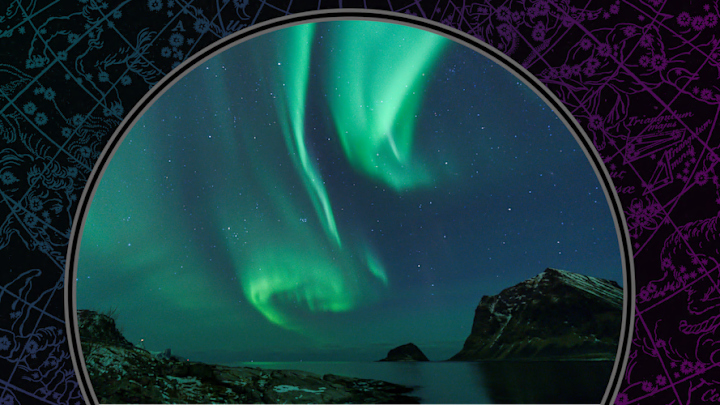NASA’s Solar Dynamics Observatory recorded a dramatic show on the surface of the sun yesterday. The space agency reports that a "significant solar flare" erupted from our system's star on Wednesday, March 30, 2022. Now a geomagnetic storm is forecast for March 31, and the northern lights could be visible in parts of the lower 48 states tonight as a result.
A solar flare occurs when the sun emits a powerful burst of radiation. NASA labeled Wednesday's solar flare an X-Class flare, placing it among the strongest flares they study.
When a concentration of energy erupts from the sun's surface, it hurls solar particles in our planet's direction. In the most extreme cases, these geomagnetic storms can interfere with electric power grids and radio and navigation signals. NOAA's Space Weather Prediction Center categorizes the incoming solar storm as a G3—or strong—storm, and says any disruption to technology should be limited. The biggest impact it may have is producing auroras at lower latitudes than usual.
The northern (and southern) lights occur when solar particles react with gas molecules in Earth's atmosphere and give off colorful light. The phenomenon is most common at the poles, where the concentration of magnetic energy is most intense. But an influx of solar energy can make the lights visible elsewhere.
According to the Space Weather Prediction Center, "Aurora may be visible over the northern tier states if the conditions are favorable." The center doesn't specify which states in the lower 48 might be treated to a light show tonight, but geomagnetic storms have brought the spectacle to Maine, Montana, Minnesota, North Dakota, Washington, New York, and Wisconsin in the past. If you live near the Canadian border, find a high vantage point with minimal light pollution on the evening of Thursday, March 31. As is the case with other meteorological and celestial events, the lights will be difficult to spot in heavily populated areas.
